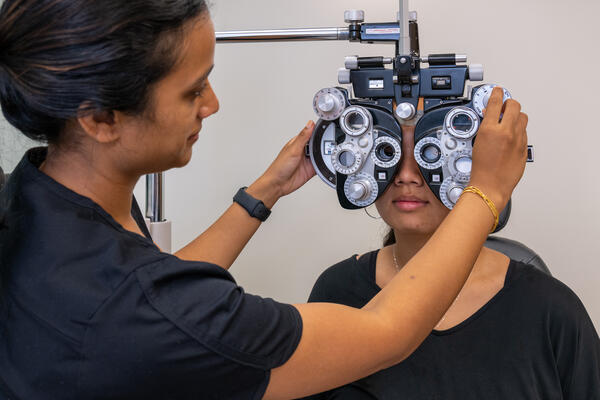Neurologist in Andalusia: Leading Specialists and Clinics Detailed
Neurologist in Andalusia: Leading Specialists and Clinics Detailed
Blog Article
The Pros and Cons of Different Refractive Surgeries for Boosted Eyecare

LASIK Surgery
LASIK surgical procedure is a commonly carried out refractive procedure that aims to correct vision issues such as farsightedness, astigmatism, and nearsightedness. Throughout the treatment, a thin flap is produced on the cornea, and a laser is used to improve the underlying tissue, correcting the refractive mistake.
One of the primary advantages of LASIK surgical procedure is the fast renovation in vision experienced by numerous individuals. It is important for people considering LASIK surgery to go through a complete evaluation by an eye care expert to establish if they are ideal candidates for the procedure.
PRK Procedure
The PRK treatment, additionally referred to as Photorefractive Keratectomy, is a sort of refractive surgical procedure that intends to correct vision issues similar to LASIK surgical treatment. Unlike LASIK, which entails developing a flap in the cornea, PRK works on the surface layer of the cornea. During the PRK procedure, the outer layer of the cornea, called the epithelium, is gotten rid of to permit improving of the underlying corneal cells with an excimer laser. This improving helps to remedy refractive mistakes such as farsightedness, nearsightedness, and astigmatism.
One of the benefits of PRK over LASIK is that it eliminates the threat of flap-related issues because no flap is created throughout the surgical treatment. Despite the longer recuperation duration, PRK can be a suitable alternative for individuals looking for vision modification surgery.
SMILE Surgical Procedure
A sophisticated refractive surgery strategy acquiring appeal in the field of ophthalmology is SMILE Surgical procedure. Little Incision Lenticule Removal (SMILE) is a minimally invasive treatment that deals with vision by reshaping the cornea making use of a femtosecond laser. Unlike conventional LASIK surgery, SMILE Surgical procedure includes creating a tiny laceration in the cornea to remove a lenticule, which causes less interruption to the corneal framework and possibly much faster healing times.
Among the main benefits of SMILE Surgical treatment is its capability to deal with myopia (nearsightedness) and astigmatism with high accuracy, bring about exceptional aesthetic outcomes for clients. The minimally intrusive nature of the treatment also lowers the risk of problems such as completely dry eye disorder, making it a favorable choice for people looking for refractive surgical procedure.

LASEK Strategy
Having discovered the benefits and factors to consider of SMILE Surgical procedure, another notable refractive surgical procedure technique worth checking out is the LASEK Technique. LASEK, which means Laser-Assisted Subepithelial Keratectomy, is a form of laser eye surgery that intends to correct refractive mistakes such as myopia (nearsightedness), hyperopia (farsightedness), and astigmatism.
Unlike LASIK, LASEK does not entail creating a corneal flap. Instead, during a LASEK procedure, the cosmetic surgeon utilizes a diluted alcohol solution to loosen the thin external layer of the cornea, called the epithelium. This layer is after that delicately relocated apart to permit the laser to reshape the underlying corneal tissue. As soon as the cornea has been reshaped to the preferred level, the epithelial layer is rearranged.
One of the key benefits of LASEK is that it can be suitable for people with thin corneas that might not be great prospects for LASIK. Furthermore, LASEK generally results in very little post-operative discomfort and a quicker recuperation time compared to PRK. The visual recuperation process with LASEK might be slightly longer than with LASIK.
Implantable Call Lenses
Implantable Get in touch with Lenses provide a long-term vision correction remedy for people seeking an alternative to typical call lenses or glasses. These lenses, likewise called phakic intraocular lenses, are operatively inserted into the eye to remedy refractive errors such as myopia (nearsightedness), hyperopia (farsightedness), and astigmatism. andalusia pediatrics. Unlike standard contact lenses that remain on the surface area of the eye, implantable call lenses work within the eye itself, supplying clear vision without the demand for day-to-day maintenance or elimination
Among the vital benefits of implantable contact lenses is their durability. Once placed, they can remain browse around this site in the eye forever, offering secure and regular vision modification. Additionally, these lenses can be a superb option for people who are not great candidates for laser eye surgical procedure or who like a reversible vision modification procedure.
Nevertheless, implantable get in touch with lenses do lug some threats, including the potential for cataracts or enhanced eye pressure. It is vital for people considering this option to consult with an eye care specialist to determine if implantable get in touch with lenses are the appropriate selection for their details requirements and eye wellness.
Verdict
In conclusion, each type of refractive surgery has its own advantages and downsides. LASIK surgical treatment is prominent for its fast healing time, while PRK procedure may be suitable for clients with thin corneas. SMILE surgery go to these guys offers marginal pain during the procedure, but LASEK method might have a longer healing process. Implantable call lenses give an alternative for those who are not suitable prospects for traditional surgeries. People need to speak with their eye care provider to determine the best option for their individual demands.

Overall, SMILE Surgery offers an encouraging alternative for individuals looking to enhance their vision through refractive surgical procedure.
Report this page